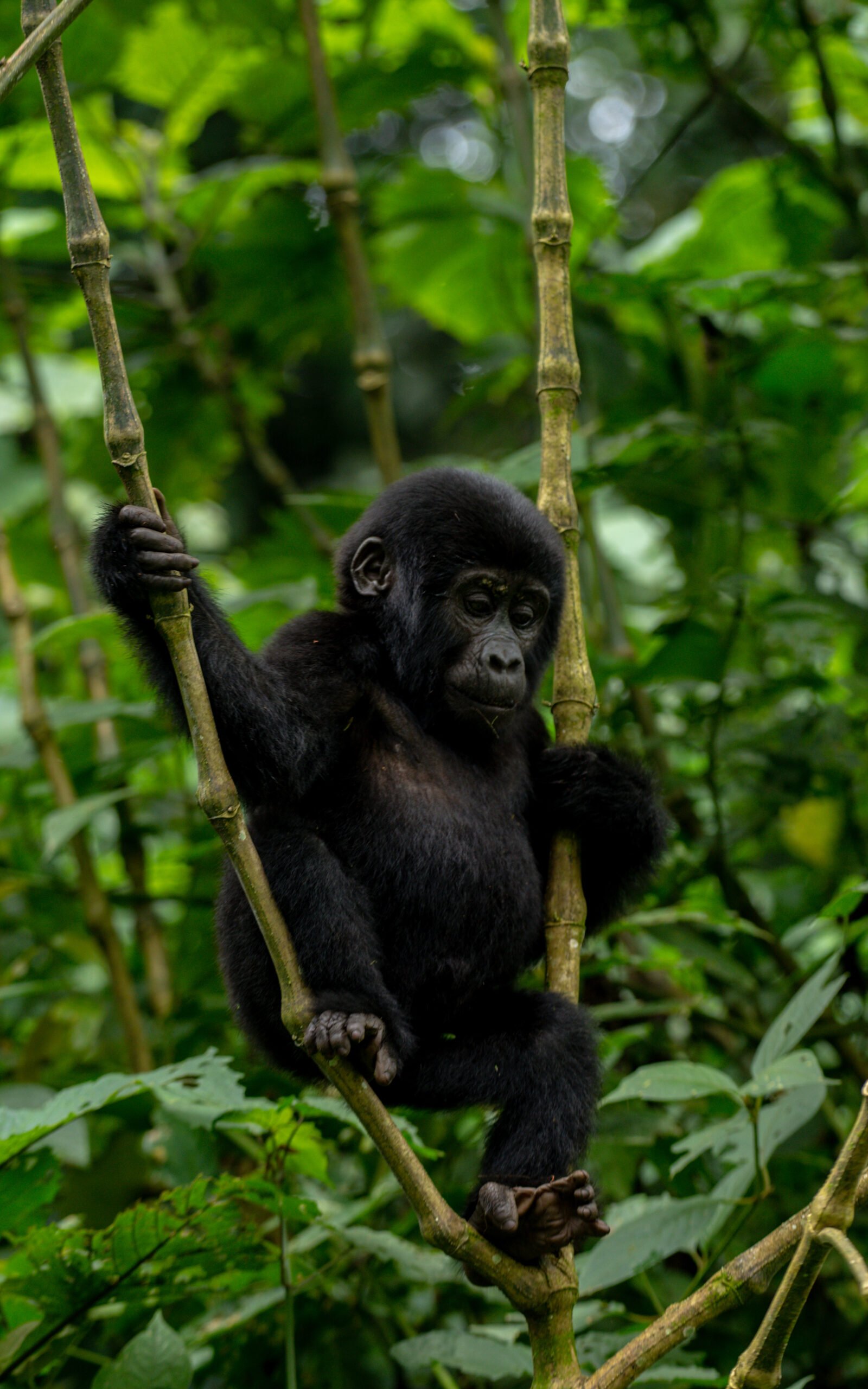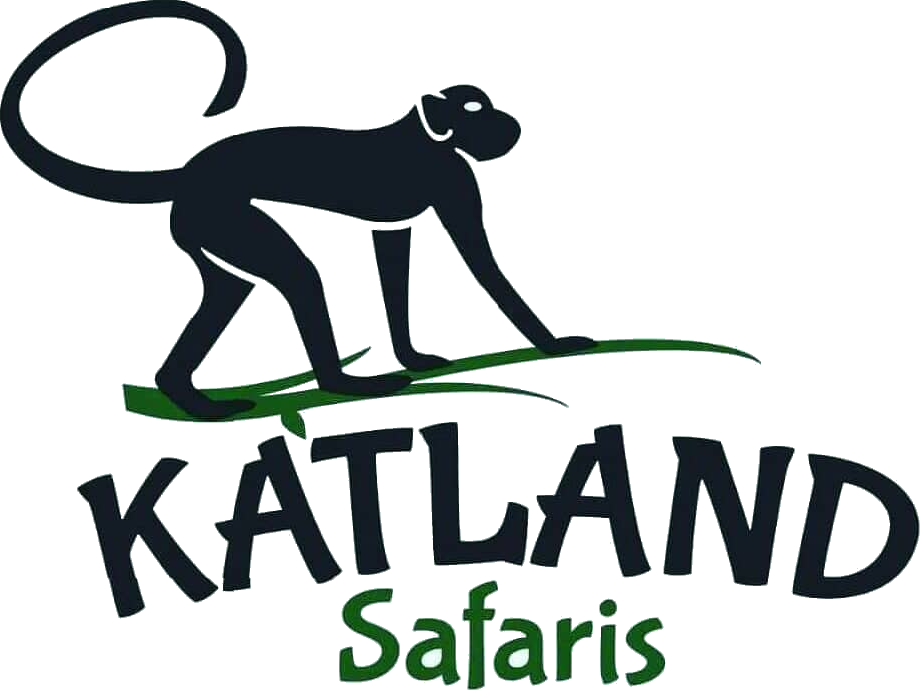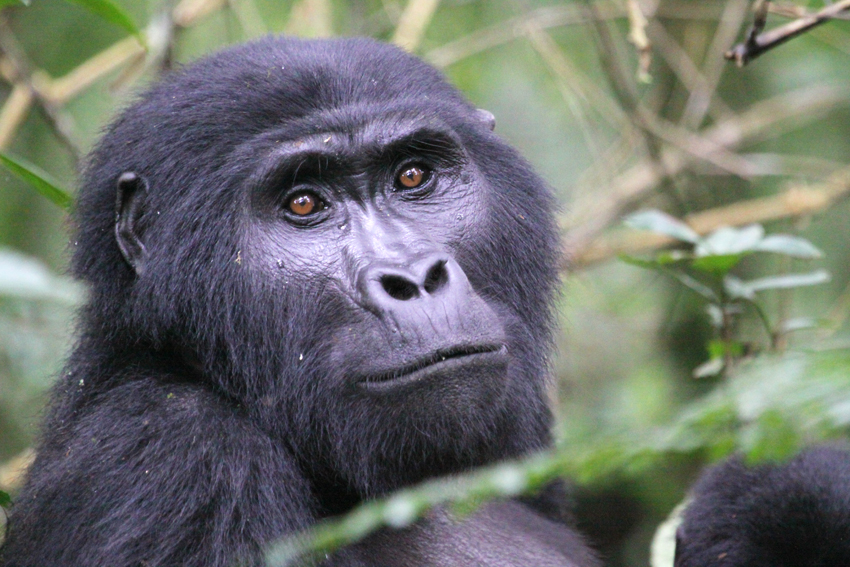How do you know that your gorilla trek in Uganda or Rwanda is guaranteed?
Gorilla trek in Uganda and Rwanda
In Rwanda and Uganda, there is a 98% probability of sighting mountain gorillas. This is a result of the mountain gorillas’ innate tendency to live in families and to spend some time in a certain feeding spot. When the food supply in their present region runs out, they move together to other feeding locations.
What Ensures Seeing Mountain Gorillas During the Gorilla Habituation Process Trekking Safari
A family of wild mountain gorillas must first become accustomed to being around people for at least an hour. The practice of acclimating wild mountain gorillas to human presence without changing their character is known as “gorilla habituation.” Nineteen gorilla families in Uganda are now completely habituated and accessible to tourists. After complete acclimatization, 15 gorilla families in Rwanda have so far been made accessible to tourists.
Depending on how the family handles the researchers and habituation, gorillas need time to become accustomed. It might take two years or longer for gorillas to become habituated. This procedure increases potential tourists’ chances of sighting the mountain gorillas.
The Expensive Price of Rwandan and Ugandan Gorilla Trekking Permits
Although expensive, gorilla trekking permits in Rwanda and Uganda are well worth the money. For international nonresidents, the cost of a Uganda gorilla permit is $800 per person per trek; for foreign residents, it is $700 per person; and for East African residents, it is 300,000shs.
Foreign non-residents must pay $1500 per person per trip for a Rwanda gorilla permit, while foreign residents must pay $500, and East African citizens must pay $300.
One hour with a fully habituated mountain gorilla family, ranger guide fees, park admission for the day, security, funding for the Gorilla Conservation Fund, and community support are all included in the permit price.
Your purchase of a gorilla permit makes a significant contribution to the protection of the formerly critically endangered mountain gorillas. They retain their natural characteristics while being used to human presence.
As long as they heed the advice during the briefing, no traveler has ever gone without seeing the mountain gorillas.
Visitors are assured of seeing the mountain gorillas with this gorilla permit fee.
The mountain gorillas’ body size
In contrast to other speedy primates, mountain gorillas’ large proportions do not impede their rapid mobility. When fully grown, male mountain gorillas may weigh up to 180 kg, while females can weigh up to 90 kg, making it difficult for them to travel quickly.
The Gorilla Trekking Area’s Topography
Movement is extremely difficult, particularly on the steep slopes, due to the volcanic geology of the regions where mountain gorillas spend their time. This increases the likelihood of seeing mountain gorillas in the jungle.
The country is covered by rough highlands made up of hills and plateaus, and the only places in Uganda where mountain gorillas can be found are Bwindi Impenetrable National Park and Mgahinga National Park. Mountain Gahinga, Mountain Muhavura, Mountain Sabyinyo, Mountain Bisoke, and Mountain Karisimbi are the five volcanoes that make up Rwanda’s Volcanoes National Park.
The mountain gorillas’ rate of movement
Since the mountain gorillas move by moving their knuckles, it is difficult for them to go quickly through the bush, making them visible at all times. The limbs of other wild creatures move quickly through the jungle.
Although some mountain gorilla groups have dominant silverbacks that are adventurous, these individuals do not always embark on adventures. There is a chance of finding such a family of gorillas.
Thick Cover of Tangled Vegetation in the Habitats of Mountain Gorillas
Tangled creepers that have endured for many years cover the environment where mountain gorillas spend their days. These might hinder the mountain gorillas’ massive bulk from moving quickly, making it easier to find them when gorilla trekking.
Lowland woodland at 1160 meters and unique Afromontane vegetation over 2700 meters are both features of Bwindi Impenetrable National Park. One of the remnants of the dry conditions of the previous ice age, Bwindi Forest has tangled itself over 30,000 years.
The vegetation at Volcanoes National Park in Rwanda and Mgahinga National Park in Uganda is made up of grass and bush that is growing back after farmers encroached on it. There is also montane woodland, bamboo zone, and ericaceous zone. Because of this year-round vegetation succession, the mountain gorillas have a stable home.
The weather in the Virunga region is unpredictable.
Moving the mountain gorillas is difficult due to the weather in the Virunga region, where rain might fall suddenly and at any moment. The mountain gorillas would occasionally hide in these areas; that is, the slopes are slick due to the erratic rainfall, making it hard for them to avoid their typical hiding place.
In the event that the mountain gorillas cannot be located on the lower terrain during periods of heavy rain, the rangers are aware of their likely whereabouts. They relocate to the slopes, particularly when the terrain becomes slick and wet. You will undoubtedly see the mountain gorillas if you have this prior knowledge.

What are the prerequisites for a safari that includes gorilla trekking in Rwanda and Uganda?
Permit for gorillas
The key to getting into the mountain gorillas’ habitat is a gorilla trekking permit. The Rwanda Development Board and Uganda Wildlife Authority are the organizations that sell gorilla trekking licenses in Uganda.
Currently, gorilla permits for Rwanda cost $1500 per person each trip, while those for Uganda cost $800.
These licenses can be purchased in installments, which equate to between 30% and 70% of the overall amount. You risk losing your permit if you don’t top up ninety days prior to the trekking date.
Can I reschedule or get a refund for my gorilla permit?
If you do not go gorilla trekking and notify the Rwanda Development Board or the Uganda Wildlife Authority in advance, you may be eligible for a refund in accordance with their respective refund policies. However, there is no certainty of reimbursement, and patience is needed.
As an alternative to a refund, the gorilla permit date may be rescheduled; nevertheless, all necessary steps must be carefully performed.
You send a letter explaining your desire to reschedule your gorilla permit to the Rwanda Development Board or the Uganda Wildlife Authority. If you would like to postpone the gorilla permit, please provide the date.
Provide proof to back up your request.
In the event that you can reschedule, our safari consultant will need to confirm availability from Rwanda’s or Uganda’s gorilla permit list. In Uganda, your gorilla permit is then postponed. You can reschedule at a different period; however, postponing a gorilla permit in Uganda for the third time would incur a 25% fee.
Accommodations to Reserve for Rwandan and Ugandan Gorilla Trekking Tours | Gorilla trek in Uganda and Rwanda
The ideal option would be to spend the night before the trekking day near or inside the locations where you are going gorilla trekking. You won’t have to worry about missing your briefing at the ranger station in the morning thanks to this. The lodging options include budget, mid-range, and luxury options.
Gorilla Forest Camp, Clouds Lodge, Gorilla Safari Lodge, Mahogany Spring, Chameleon’s Lodge, Ruhija Gorilla Lodge, Gorilla Resort, Silverback Lodge, Bwindi View Bandas, Enga Lodge, Lake Kitandara Tented Camp, and more lodging options are available in Bwindi Impenetrable National Park.
Note: Make reservations for lodging in Bwindi Impenetrable National Park according to the region for which your gorilla permit is issued. Permits for Bwindi Impenetrable National Park are reserved based on the region. These regions include the northern Buhoma area, the eastern Ruhijah area, and the southern Bwindi Forest sections of Rushaga and Nkuringo.
Kisoro town offers lodging options for Mgahinga National Park, including Gahinga Lodge.
Volcanoes National Park lodging options include Kinigi Guest House, Lebambou, Mountain Gorilla View Lodge, and Sabyinyo Silverback Lodge.
How to Travel to Rwanda or Uganda for Gorilla Trekking | Gorilla trek in Uganda and Rwanda
By route to the impenetrable national park of Bwindi
The fastest way to get to the Buhoma area of Bwindi for gorilla trekking is by Kampala to Ntungamo to Rukungiri to Kihihi to Buhoma. Rukungiri is 390 kilometers away from Kampala by road, while Buhoma is 82 kilometers away.
The route from Kampala to Kabale to Ruhija to Buhoma is in bad shape, thus you need a 4×4 wheel drive car. You go 414 kilometers from Kampala to Kabale, and then 95 kilometers from Kabale to Ruhijah, and finally to Buhoma.
It is 160 kilometers from Mweya and 64 kilometers from the Ishasha area of Queen Elizabeth National Park to Buhoma.
To the National Park of Mgahinga
It is 540 kilometers from Kampala to Kabale, Kisoro, and Ntebeko Center in Mgahinga National Park. The trip is 414 kilometers from Kampala to Kabale, 80 kilometers from Kabale to Kisoro, and then another 14 kilometers to Ntebeko center.
To the National Park of Volcanoes | Gorilla trek in Uganda and Rwanda
It takes around three hours to drive along winding roads from Kigali airport to Volcanoes National Park.
By Air to Mgahinga National Park or Bwindi Impenetrable National Park
Domestic flights take one and a half to two hours each day from Entebbe Airport or Kajjansi Airstrip to Kihihi Airstrip or Kisoro Airstrip. To enter the national parks, you need to reserve a transfer vehicle. The reason for this is that the planes don’t land in the national parks.
There are also charter flights available from Entebbe Airport or Kajjansi Airstrip.
To the National Park of Volcanoes
It is possible to take charter planes to Volcanoes National Park from Kigali Airport.
How Much Does a Rwandan or Ugandan Gorilla Trekking Safari Cost? | Gorilla trek in Uganda and Rwanda
The gorilla permit fee is the first expense of a gorilla trekking safari, and it affects all price ranges, whether they are mid-range, luxury, or budget.
The following other elements contribute to the gorilla trekking safari’s total cost:
When scheduling a gorilla safari, the peak season often offers the highest rates for things like renting a car and making reservations for lodging. Discounted prices are typically seen during the off-peak period.
The price per person for every trip decreases as more individuals join the gorilla trekking safari that is being offered. You get to split the expenses. The full expense of a gorilla trekking expedition is borne by lone travelers.
You are required to go gorilla trekking on several occasions; however, if you want to do double gorilla trekking, the fee will be considerable as you will need to get an additional permit.
Since the majority of the gorilla trekking safari’s components are paid for on a daily basis, the gross cost increases with the number of days spent on safari. The fee increases with the number of days.
Additional activities that may be combined with gorilla trekking include wildlife drives, birding safaris, chimpanzee trekking, and much more. The fees for each of these activities vary.
What Not to Do While Trekking with Gorillas?
During gorilla trekking, it is important to avoid cluttering the forest since this might change the environment in which mountain gorillas live.
Since mountain gorillas rely only on foliage for sustenance, it is prohibited to spit on it as this might spread infections to the animals.
It is prohibited for children under the age of fifteen to access the woodland. This is because it is uncertain how long it will take to find the mountain gorillas. It takes some perseverance to see the mountain gorillas.
Speaking loudly when in the bush might drive mountain gorillas and other forest inhabitants into hiding.
If you have a contagious illness, such as the flu, COVID-19, or a cough, avoid going into the forest. You could infect the extremely vulnerable mountain gorillas with these pathogens.
If you want to take a call and cover the area completely so that nothing is excavated, ask the ranger guide to dig a hole for you.
In order to reduce the possibility of infecting the mountain gorillas, avoid coughing or sneezing near them.
To reduce the likelihood that the mountain gorillas may steal food from you, keep your distance from them at least 300 meters. Since they are wild creatures, they cannot live on human food.
Because flash photography might frighten mountain gorillas, it is prohibited.
Once you find the mountain gorillas, you are only permitted to spend an hour with them. They have been accustomed to spending that amount of time with others.
Booking gorilla trekking safaris in Uganda and Rwanda with Katland Safaris
Katland Safaris organizes the best gorilla and wildlife safaris in East Africa. When it comes to gorilla trekking, we will book your gorilla trekking permits for Uganda`s Bwindi and Mgahinga gorilla national park and gorilla permits for Volcanoes National Park in Rwanda. Besides booking your gorilla permit, we will also put all other gorilla safari accessories, like transportation and accommodation, in one package to make your gorilla trekking safari a memorable adventure.
Your gorilla trekking safaris can be customized to meet your safari expectations and needs, and budget. The safari package can range from budget, mid-range, and luxury safaris.
Feel free to contact our team of excellent safari consultants to help you organize the best Africa gorilla safari ever.



